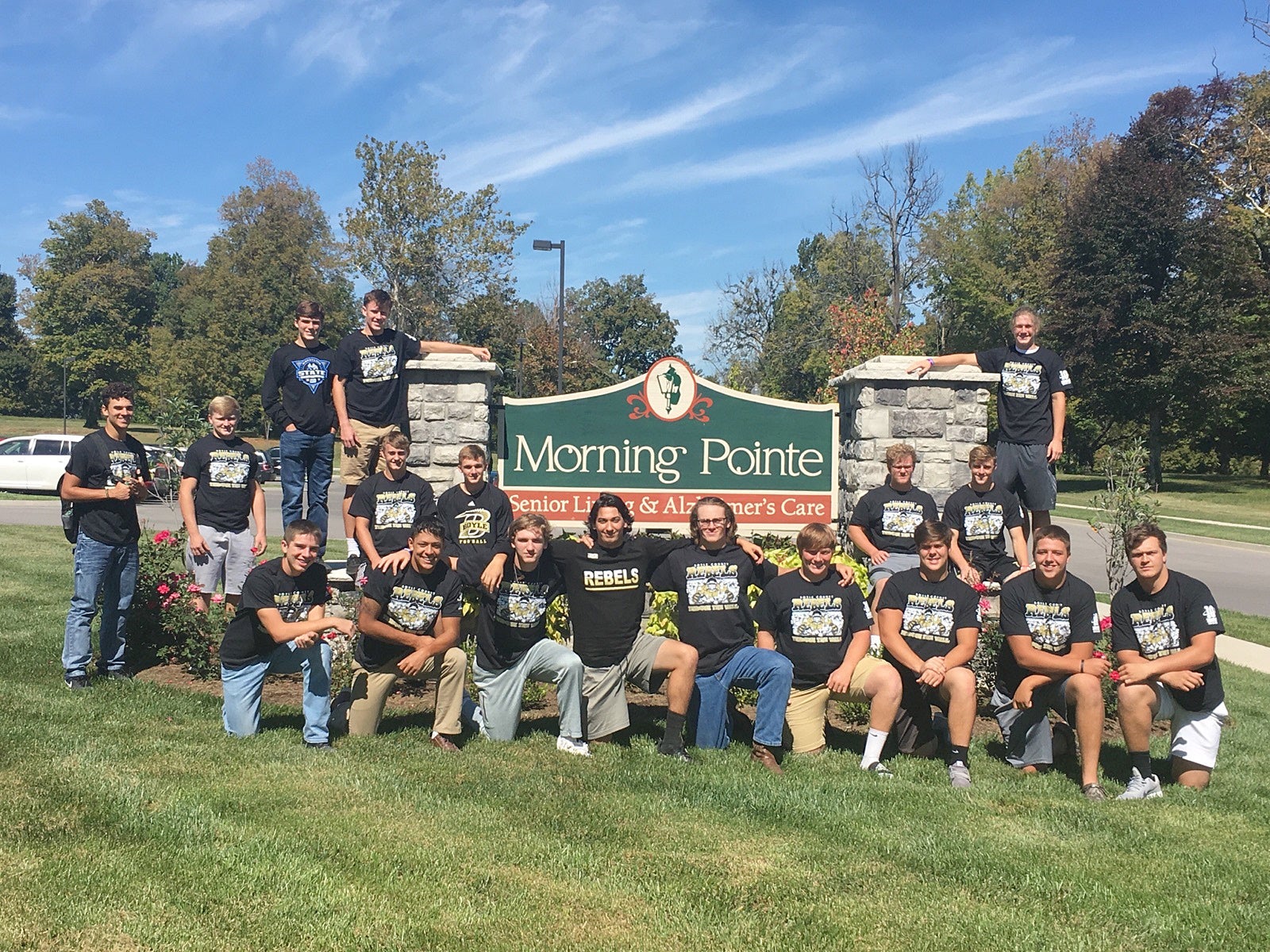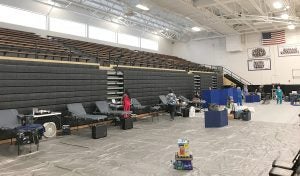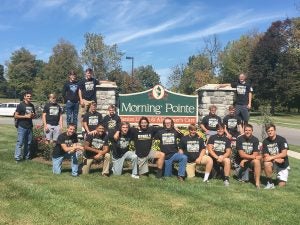From our schools: The Rebel
Published 8:37 am Monday, October 16, 2017

- Photo by Katie Tiller Eighteen seniors on this year’s football team recently visited Morning Pointe Senior Living & Alzheimer's Care Center of Danville to spend time with the residents who would be benefiting from this year’s Rebels with a Cause donation. Rebels with a Cause is a charitable program that the football team initiated in 2012. Before each football season begins, team members select a cause to support. T-shirts are then designed and sold throughout the fall to raise money for their designated organization. This year the team chose to support those living with Alzheimer’s. During the seniors’ trip to Morning Pointe, time was spent interacting with the many residents affected by this progressive disease.
Turning a negative into a positive
Students unselfishly gather to help others in need
By Mitchell Paycheck
BCHS

Photo by Gary Wood
The Kentucky Blood Center converted Rebel Arena into a makeshift lab where 44 students and a staff member donated 45 units of blood. This blood drive was held in response to Hurricane Harvey’s devastating effects in Texas that directly affected Kentucky’s local blood supply.
Someone bleeding in a high school gymnasium is usually not a good sign and definitely a cause for immediate concern. However, on October 26th at Boyle County High School, students were given the opportunity to prove that losing blood in the gym can actually be a positive circumstance.
Due to the very unfortunate and devastating effects of Hurricane Harvey, Houston blood banks were in great need of finding additional supplies. Scrambling for donations, Houston blood centers contacted the Kentucky Blood Center for immediate export of all blood donations to their area. While the Kentucky Center was extremely happy to help, they suddenly were without any reserves for the local area.
In response to this unexpected need, Lexington’s Kentucky Blood Center began reaching out to bluegrass area schools for help in replenishing their blood bank. BCHS was included in this list.
As a result of networking at a summer conference, the blood center contacted BCHS Allied Health Instructor and Health Occupation Students of America (HOSA) Advisor Jennifer Carney. Carney agreed to help and then conferenced with her HOSA members who were also very eager to organize and manage the undertaking.
Even though blood drives are normally organized at the school once a year, this particular drive was organized due to a special need. Carney explained, “This is the first year that the blood drive actually contacted us because of the lack of blood donations during the hurricanes. There was not an actual need for blood, the organization was just low on donations.”
A representative from the Kentucky Blood Center met with HOSA members after school one day before the project began to discuss the drive and to train them for what the day would look like.
Whether a regular blood drive or not, the Kentucky Blood Center knew they could count on the Rebels to get the job done.
Upon arrival, the Kentucky Blood Center staff immediately began transforming the gym into their unique workplace. They quickly constructed blue walls for confidential interviews and arranged beds for their upcoming ten minute sessions with their donors.
By 9 o’clock they were on their way to securing the first donation. The work was then handed over to HOSA. These members were now responsible for retrieving students who had previously signed up for selected donation times.
Once students got past the interviews behind the blue walls, the challenge for each person would be unpredictable.
Kentucky Blood Center phlebotomist Kiera Paycheck was present that day and helped receive donations. “Typically they (students) are nervous, but that is to be expected. Usually after the initial stick is over, it is smooth from there. Boyle County was a nice blood drive to come to because Jennifer Carney informed the students well before hand.”
A smooth transition was expected because students were well prepped for their upcoming experience. Carney shared, “They were reminded to drink plenty of fluids the day before, avoid caffeine, and eat a good Cracker Barrel breakfast the day of donating.”
The Kentucky Blood Center gave HOSA a goal of 50 donations, a challenging level to meet. HOSA member Cameron Guinn worked the blood drive the entire day hoping to reach that goal. “We were issued a goal to collect 50 units that day, but we only collected 45. Sixty-one students were willing to give blood that day, but they only collected 45.”
Students can end up not giving blood for many different reasons. Boyle County student Mia Kendrick was one of those students. “I’ve tried to give blood previously at school, but my hemoglobin [Iron] was too low and I couldn’t donate.” Other issues surrounding student heart rate, blood pressure, and out-of-country exposure contributed to 16 people not making it past the interview table.
Even though HOSA members did not meet their donation goal, they still had a very successful day. Guinn was there to finish out the blood drive. “We felt really good about it afterwards. Even though we didn’t meet our goal, we still did a really good job getting donations.”
In reflection of the day’s activities, Carney received many complimentary responses from the phlebotomists who were present. “They told me that our HOSA workers were very professional and well-organized.” Their roles included “working their assigned stations and keeping a faithful watch for lightheadedness and when they felt well enough, would walk each donor back to their classroom.”
Not surprising, a total team effort by staff and students led to a successful day of giving. From the 61 willing donors, to the nine turned away at the end of the day due to time restraints, to the food service staff willing to feed early and late arrivals, the blood drive results were fantastic as they more than tripled their previous drive.
So it does go to show that losing blood in the gym really can be a positive circumstance…when people unselfishly gather to help others in need.

Photo by Katie Tiller
Eighteen seniors on this year’s football team recently visited Morning Pointe Senior Living & Alzheimer’s Care Center of Danville to spend time with the residents who would be benefiting from this year’s Rebels with a Cause donation.
Rebels with a Cause is a charitable program that the football team initiated in 2012. Before each football season begins, team members select a cause to support. T-shirts are then designed and sold throughout the fall to raise money for their designated organization.
This year the team chose to support those living with Alzheimer’s. During the seniors’ trip to Morning Pointe, time was spent interacting with the many residents affected by this progressive disease.





